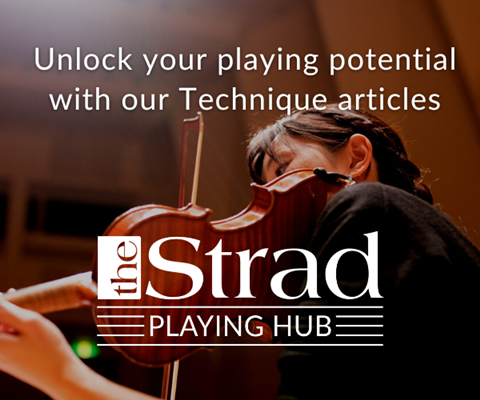Donna Maurer offers six tips to help violinists master the technique of vibrato

Explore more Technique articles like this in The Strad Playing Hub
Violin players can become frustrated when they want to improve their skills with vibrato. The process can be challenging and daunting since it takes a lot of time, patience, and effort. But the joy of playing vibrato on the violin can enhance your music piece, giving it the right emotion and evoking the feelings of your listeners.
Mastering violin vibrato is an art, and players need to exercise vibrato motion to make the sound more effortless. If you need some assistance with learning the art of vibrato, follow these expert techniques and tips to improve your violin’s expressiveness.
Know the Violin Vibrato Types
Before you attempt to learn techniques for vibrato, you must learn the types. Vibrato on the violin is split into three types: the arm, wrist, and finger. Arm and wrist vibrato is the most commonly used, but all types need your arm and hand to be loose.
Most beginners will start with the wrist and arm vibrato before adding the finger. You must understand the differences between all three when you play.
Players can vary the intensity and speed of the vibrato, depending on the musical piece. Mixing the types of vibrato gives your violin a heightened variety of emotions and moods, making your music more colourful and creating a lasting impact.
Read: Developing arm, wrist and finger vibrato
Read: Violinist Aaron Rosand on how to produce a good vibrato
1. Audibly Hear Your Note
The violin professionals from Music To Your Home in NYC have a pro tip for budding violinists: Make sure you start on the note and oscillating below, and go slowly beginning from the note so you can hear it flatten. They also recommend starting each exercise with your first or second finger since they are the strongest. Pinky vibrato is the hardest for a violinist to master! Start slowly, with pre-vibrato exercises as you warm up.
2. Wipe The Strings
An excellent exercise to help you begin your vibrato is by keeping your hand and wrist in one position and shifting from the first position to the third position. When you do this, put the third finger down into the first position and do what’s called ’wipe the strings.’ It’s as if you’re cleaning them going from the first to the third position, and releasing the first joint of the fingers.
3. Shift in Half Steps
Starting with your first finger down, shift your entire hand and arm a half step on the fingerboard, leading with your elbow so your wrist doesn’t collapse. Do it on a B natural and then B flat on the A string, and start by practising with each finger slowly.
4. Isolate the Wrist
Practice a knocking motion to isolate the wrist, and then create the same knocking motion when you’re playing. Start with your wrist in a neutral position, then move it backward; don’t let it become forward beyond its initial position, to keep the pitch stable. Setting a metronome helps to keep your tempo, so you can move your arm and wrist back on the rhythm until it’s fluid in technique.
5. Pretend to Bow
Executing smooth bow changes so that the bow doesn’t affect your vibrato is the mark of an expert violinist. The hands are doing separate actions and it is hard to coordinate, so it helps to pretend that you’re bowing when practicing your vibrato. Then, you can bow on an open string and make a sliding motion with the left hand. Focus on the tone and go slowly when switching hands.
6. Incorporate Finger Vibrato
Once you can slide and create arm and wrist vibrato with more ease, you can start to incorporate your finger vibrato. The first knuckle of your finger needs to be loose, and finger movements are much faster against the string. Ensure your fingertip doesn’t press too tightly on the strings as you play.
With these helpful tips and techniques, you can work a little bit every day to improve your vibrato on the violin and produce a good sound. Remember to have good posture with relaxed shoulders while you play.
Read: Violinist Lihay Bendayan: Fourth finger vibrato
Read: 10 things you need to know about vibrato
Read: Why can’t players get vibrato right?
Read more Technique articles like this in The Strad Playing Hub
Topics
Best of 2023: The Strad Playing Hub
- 1
- 2
- 3
 Currently reading
Currently readingThe Art of Vibrato: Techniques and Tips for Violinists
- 4
- 5
- 6
- 7
- 8
- 9
- 10
- 11






















































No comments yet